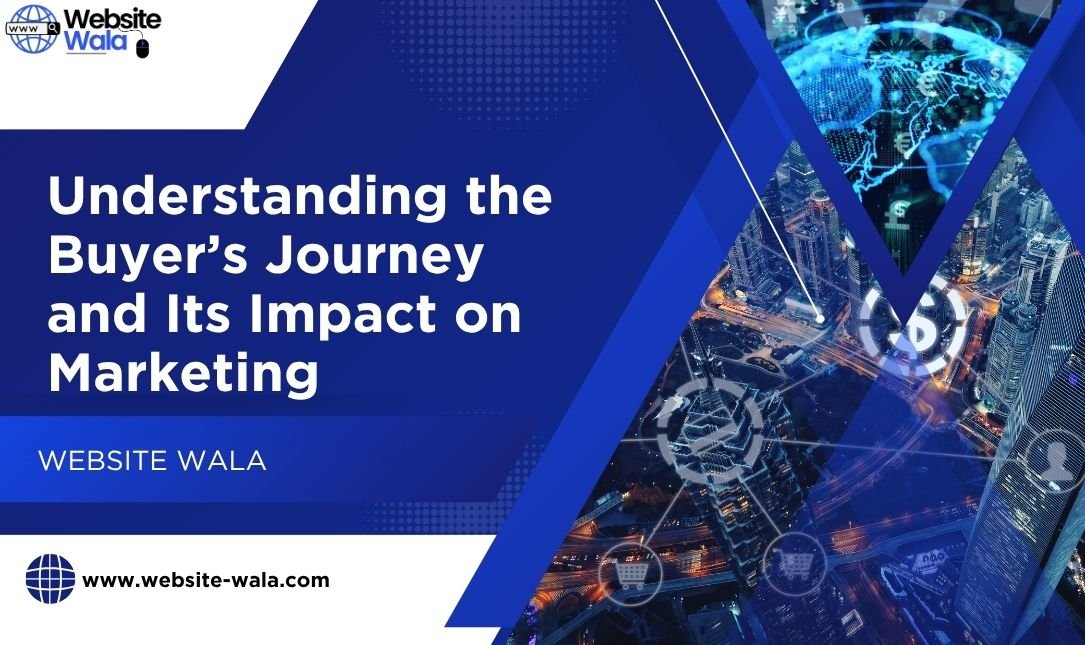
Understanding the Buyer’s Journey and Its Impact on Marketing helps optimize marketing strategies, boost sales, and improve customer satisfaction.
Introduction: The Importance of Understanding the Buyer’s Journey and Its Impact on Marketing
In today’s competitive business landscape, understanding the buyer’s journey and its impact on marketing is crucial for creating effective campaigns that drive sales success. Businesses that grasp the nuances of a customer’s decision-making process can tailor their marketing strategies to meet potential buyers at every touchpoint. From initial awareness to the final purchase decision, each stage offers unique opportunities to influence prospects and enhance overall customer satisfaction.
By investing time in customer journey mapping, marketers can gain a clearer picture of how buyers interact with their brand. This insight directly informs marketing efforts, improves lead generation, and strengthens customer retention.
What Is the Buyer’s Journey?
The buyer’s journey refers to the series of steps a potential customer takes before making a purchase decision. Understanding this process is foundational for sales funnel management and ensures that marketing messages resonate at the right time. Typically, the journey is broken into three main buyer’s journey stages:
-
Awareness Stage: Buyers recognize a problem or need. At this stage, inbound marketing efforts like blog posts, social media content, and SEO play a pivotal role in attracting attention.
-
Consideration Stage: Prospects evaluate different solutions. Here, case studies, webinars, and product comparisons help guide the decision-making process.
-
Decision Stage: The buyer chooses a solution. Marketing and sales teams focus on conversion strategies, offering demos, trials, or special offers to encourage the final purchase.
Each of these stages requires tailored marketing strategies that align with the buyer’s mindset, which emphasizes the significance of understanding the buyer’s journey and its impact on marketing.
The Buyer’s Journey Impact on Marketing
The buyer’s journey impact on marketing cannot be overstated. By aligning content and campaigns with each stage of the journey, businesses can ensure they reach prospects with the right message at the right time. This alignment improves conversion optimization and fosters stronger connections with customers.
For instance, during the awareness stage, brands focus on educational content to build trust. During consideration, marketers provide in-depth resources to demonstrate value. At the decision stage, personalized offers and incentives drive action. By applying customer journey mapping, companies gain insights into gaps in their marketing efforts, enabling more effective lead generation and nurturing.
Integrating Marketing Strategies with the Buyer’s Journey
Successful companies integrate marketing strategies across the entire buyer’s journey. This approach ensures seamless communication and a consistent brand experience. Key strategies include:
-
Inbound Marketing: Attracting prospects through valuable content that answers questions and addresses pain points.
-
Email Campaigns: Nurturing leads with targeted messages tailored to their stage in the journey.
-
Content Marketing: Creating blog posts, whitepapers, and videos that align with buyer intent.
-
Social Media Engagement: Building brand awareness and community support to guide prospects through the funnel.
Integrating these strategies with sales funnel management strengthens the buyer relationship and directly impacts sales success.
Optimizing for Sales Success
A clear understanding of the buyer’s journey contributes significantly to sales success. By identifying where prospects are in the journey, sales teams can engage them appropriately, avoiding generic pitches that may lead to lost opportunities. For example:
-
Awareness Stage: Focus on educating and building trust.
-
Consideration Stage: Provide detailed comparisons and success stories.
-
Decision Stage: Offer demos, free trials, or consultations to drive conversions.
This structured approach also supports conversion optimization by ensuring that each interaction nudges the prospect closer to a purchase decision.
The Role of Customer Journey Mapping
Customer journey mapping is a vital tool for understanding buyer behavior and optimizing marketing efforts. By visualizing every interaction a customer has with your brand, businesses can identify friction points and opportunities to enhance the experience. Effective mapping informs strategies for:
-
Lead Generation: Understanding where prospects enter the funnel and what content attracts them.
-
Customer Retention: Recognizing moments that strengthen loyalty and satisfaction.
-
Customer Satisfaction: Ensuring smooth transitions between stages to minimize frustration and maximize engagement.
With detailed maps, businesses can implement inbound marketing techniques that align with each stage, enhancing both sales funnel management and overall sales success.
Measuring and Improving Marketing Effectiveness
To truly leverage understanding the buyer’s journey and its impact on marketing, companies must measure performance at every stage. Key metrics include:
-
Lead Conversion Rates: Tracking how leads progress through the funnel.
-
Engagement Metrics: Measuring interactions with content, emails, and social channels.
-
Customer Retention Rates: Evaluating how effectively the journey encourages repeat purchases.
-
Customer Satisfaction Scores: Ensuring the buyer experience aligns with expectations.
Data-driven insights allow marketers to refine their campaigns, boost conversion optimization, and continuously improve marketing strategies for greater sales success.
Conclusion: The Strategic Advantage
Understanding the buyer’s journey and its impact on marketing is no longer optional—it’s a strategic necessity. Companies that invest in mapping the journey, aligning marketing efforts with buyer’s journey stages, and leveraging inbound marketing techniques see higher lead generation, better sales funnel management, and stronger customer retention.
Ultimately, the buyer’s journey is more than a theoretical framework; it’s a roadmap for achieving sales success, enhancing customer satisfaction, and optimizing every touchpoint for maximum impact. Businesses that prioritize this understanding gain a competitive edge, ensuring that each marketing interaction moves prospects closer to a successful purchase decision.























